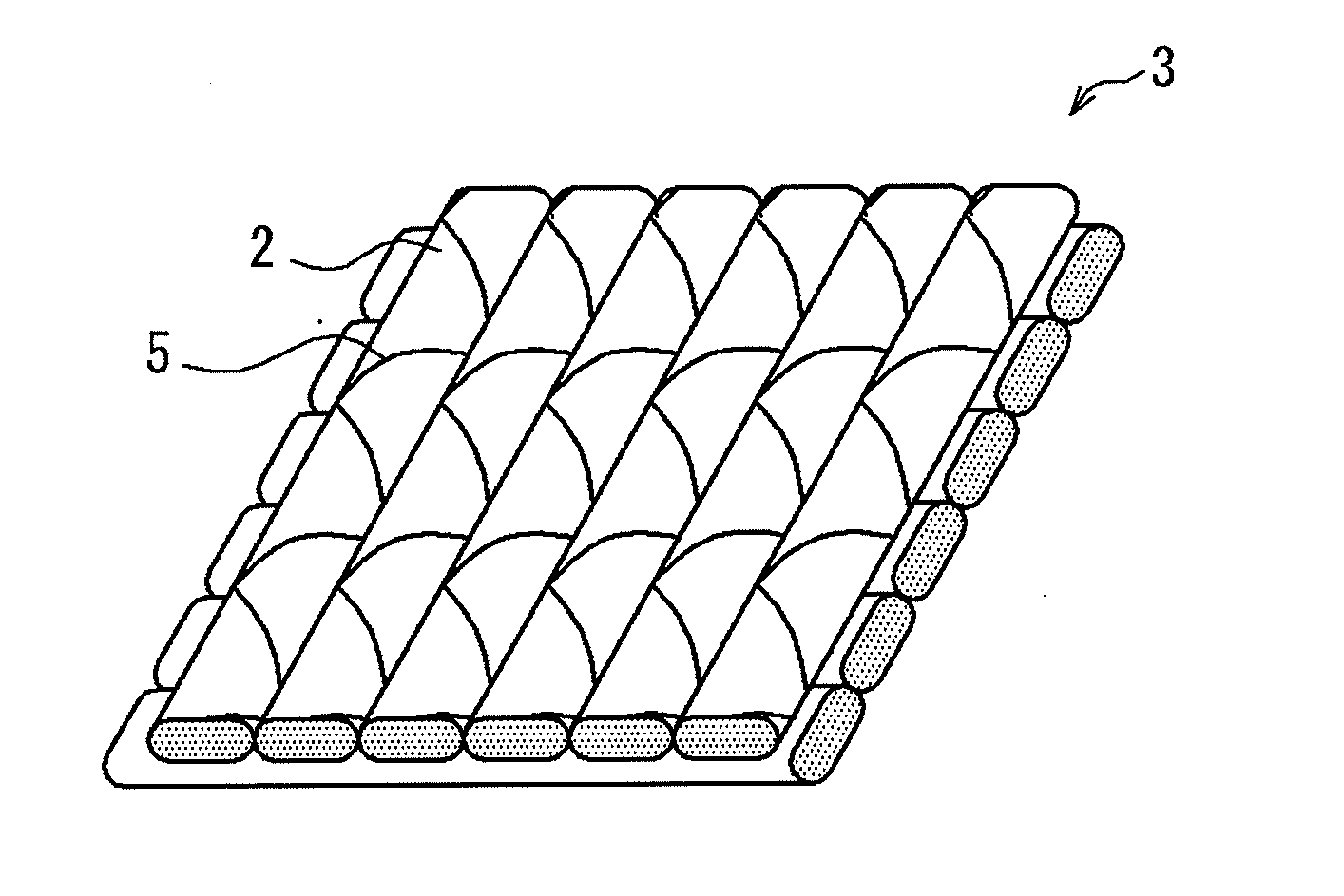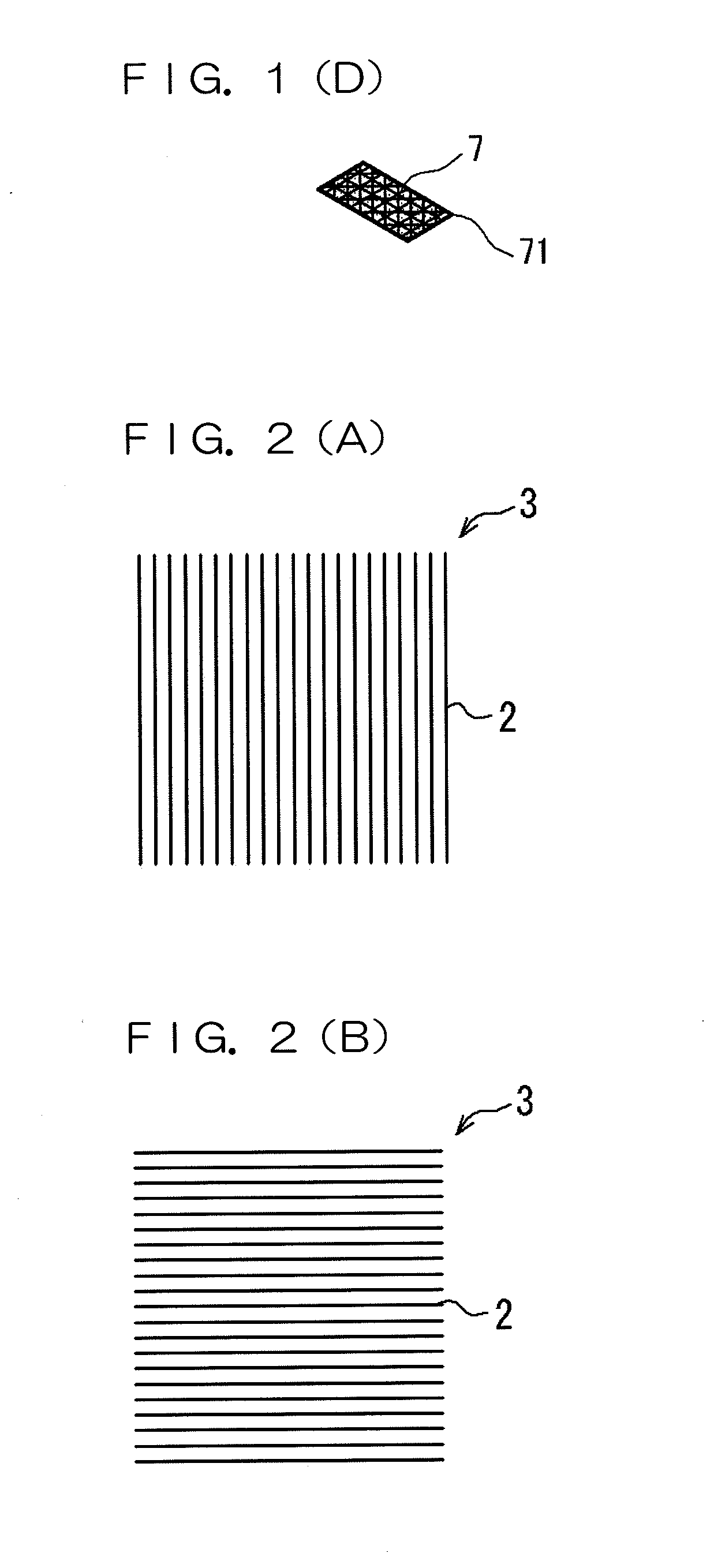Base fabric for airbag, airbag and method for production of the same
a technology for airbags and base fabrics, applied in the direction of vehicular safety arrangements, pedestrian/occupant safety arrangements, synthetic resin layered products, etc., can solve the problems of unfavorable weight saving, inconvenient operation, and inconvenient use, so as to improve productivity, simplify the steps, and the effect of simple operation
- Summary
- Abstract
- Description
- Claims
- Application Information
AI Technical Summary
Benefits of technology
Problems solved by technology
Method used
Image
Examples
example
[0043]Hereinafter, the invention will be more specifically described using figures.
1. Configuration of Base Fabric for Airbag
[0044]A base fabric for an airbag 1 according to the embodiment is provided with a fibrous laminate 4 shown in FIG. 2(E) in which plural fibrous bodies 3 configured by fibers 2 that are oriented in one direction are laminated. In the fibrous laminate 4, an oriented direction of the fibers 2 in one fibrous body 3 out of two fibrous bodies 3 that are adjacently laminated is different from an oriented direction of the fibers 2 in the other fibrous body 3. Herein, four pieces of the fibrous bodies 3 [FIGS. 2(A) to (D)] are laminated, and unidirectionally orienting directions of the fibers 2 constituting each of the fibrous bodies 3 respectively form an angle of substantially 45 degrees and they are spaced at substantially equal intervals [FIG. 2(E)].
[0045]The cover factor of the fibrous laminate 4 was 1729.
[0046]The fiber 2 constituting the fibrous body 3 is made ...
PUM
| Property | Measurement | Unit |
|---|---|---|
| angle | aaaaa | aaaaa |
| angle | aaaaa | aaaaa |
| angle | aaaaa | aaaaa |
Abstract
Description
Claims
Application Information
 Login to View More
Login to View More - R&D
- Intellectual Property
- Life Sciences
- Materials
- Tech Scout
- Unparalleled Data Quality
- Higher Quality Content
- 60% Fewer Hallucinations
Browse by: Latest US Patents, China's latest patents, Technical Efficacy Thesaurus, Application Domain, Technology Topic, Popular Technical Reports.
© 2025 PatSnap. All rights reserved.Legal|Privacy policy|Modern Slavery Act Transparency Statement|Sitemap|About US| Contact US: help@patsnap.com



